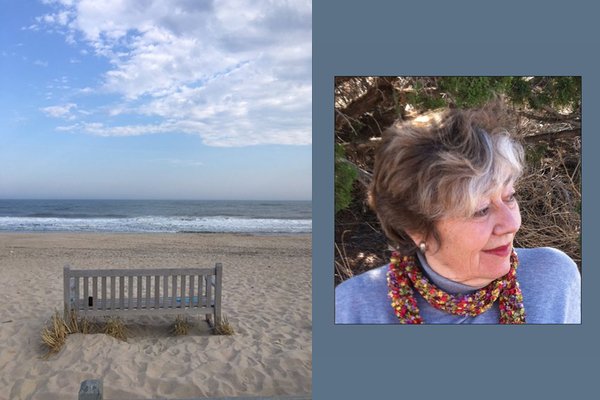Ellen Koment
recipient of the
The Elizabeth Sloan Tyler Memorial Award
Ellen Koment , first place winner in the WTP first annual art competition, is a native New Yorker, who lived in Coney Island, half a block from the boardwalk until age seven. She and her family eventually moved to the West Coast, but she would return to New York City to attend the High School of Music and Art and The Cooper Union Art School. Later, she would attend graduate school at UC Berkeley. She eventually moved to Santa Fe, having been returning there for a number of years, following a residency at the Wurlitzer Foundation in Taos. She has been living and painting there as an artist ever since: “[Santa Fe] has been kind to me as an artist: from having galleries in which to exhibit my work, to interacting with a vibrant artist community. I’ve enjoyed teaching encaustic workshops (and am doubly pleased that they have been so popular), as well as teaching at UNM and SFCC.”
The works Koment submitted and that will be appearing in the WTP Winners’ edition in December are from her series Pours, which began in 2011 when she was preparing for an upcoming show at BOX gallery in Santa Fe: “It was, initially, a way to work out ideas. I found it both compelling and freeing to work in this way, the immediacy of pouring hot wax, which dries almost instantly, required a concentration and awareness that was both exciting and compelling.”
Ellen Koment is a painter and teacher who has been working with, exhibiting, and teaching encaustic for twenty years, not only out of her Santa Fe Studio but as well in Malaga, Spain. “Images that come from both outside and from within become a physical reality in wax,” she explains in Encaustic Art in the Twenty-First Century, edited by E. Ashley Rooney, where her work is included:
“Wax is different than other mediums. It is mutable, fluid, responsive, and forgiving. It is hotter, faster, and more physical. It doesn’t wait for you; instead, it hardens and you must apply heat to reawaken it. It sings your song and resists control, although control is entirely possible. It bends to your ways and leads you down new paths. It has its own voice and its own language that suggests and leads, responds and obeys… Encaustic painting has been around for 2,000 years. During that time, many artists have molded it to suit their artistic needs. Today we are in the midst of an encaustic resurrection that, for many artists, is a gateway into new and unexplored territory.
I painted and exhibited for twenty-five years before wax crossed my path. Starting as an occasional diversion, it has developed into a way of life. It has shown me a variety of new possibilities, while allowing me to retain my roots as a painter. Form, color, and spirit are the language of painting. They serve the real concerns—inspiration, intention, and concept—which are brought into reality through the sometimes challenging but always rewarding medium of encaustic. Encaustic flows more, breathes more, has more depth, and has an inherent beauty. Encaustic painting, as all painting, is the exploration of the internal manifested as the external. It is a spiritual practice, a developed routine: it is an extension of our being. Neuroscience explores the questions of why some of us are born with this impulse to create art. Kandinsky describes it as an “inner necessity” for some, while it holds no interest at all for others. If you are born with that urge or go down that path, how do you best serve the impulse? Some write music, write, sculpt; some paint. Those who have turned to encaustic seem intrigued by its rapid drying, its fluidity, its diversity, and the sheer beauty of the surface.
It easily enables multiple layers, allowing beautiful glazing of colors and a wide range of expressive possibilities. With the artist’s ability to create transparent layers comes the possibility of creating depth and building rich color. Each layer is informed by the layer beneath. You can make marks or drawn lines between layers and create an unusual depth, where the surface is the product of all the layers beneath. I tell artists in my workshops to trust their impulses, go into themselves, and know that what comes out is who they are and that is the most genuine content for their work in any medium. If the translation of those impulses into a visual language is informed by knowledge of drawing, color, design, and all the components of a piece, their results will reflect that.”
She is the 2013 recipient of the prestigious La Vendéenne award for Excellence in Encaustic Education, a graduate of The Cooper Union Art School, and holds a master’s degree in painting from UC Berkeley. Details of her workshops can be found on her website at www.ellenkoment.com.
Look for her works in the 2017 WTP special winners edition coming out in December.
Copyright 2017 Woven Tale Press LLC. All Rights Reserved.


